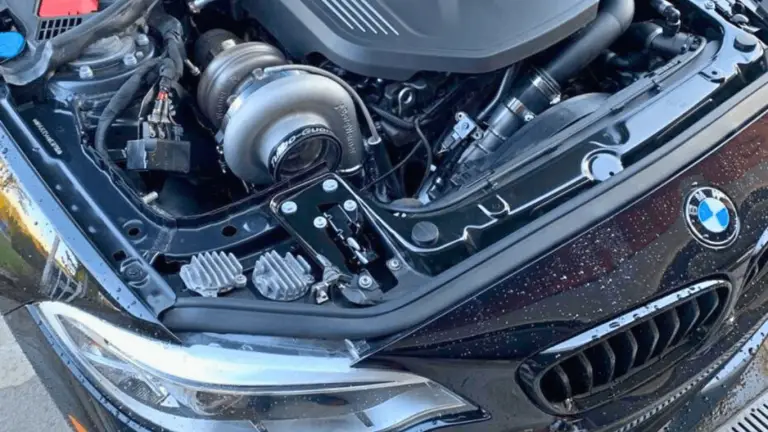How Many Miles Can a BMW 5 Series Last? Expert Insights.
The BMW 5 Series is one of the most popular executive sedans on the market today. Known for its powerful engines, sporty handling, and luxurious ride, many drivers are curious just how many miles their 5 Series can last before requiring major repairs.
So how many miles can a BMW 5 series reasonably last before needing expensive mechanical work?
With regular maintenance and care, a BMW 5 Series can easily last between 150,000 to 300,000 miles.
In this complete guide, we’ll cover everything you need to know about BMW 5 series mileage and longevity, including:
- Average lifespan and mileage
- Factors that impact longevity
- Optimal maintenance tips
- When to replace common parts
- High mileage issues to look out for
Let’s get started!
Average Lifespan of a BMW 5 Series
The 5 series spans multiple generations, from the executive favorite E39 produced between 1995 to 2004, to the cutting edge G30 generation today.
Across all generations, a well maintained BMW 5 series can last to over 200,000 miles. In fact, many owners report their 5 series reaching over 300,000 miles and beyond.
According to data gathered from surveys, user forums, and BMW enthusiast sites, the average mileage lifespan of a BMW 5 series falls between 150,000 to 300,000 miles.
This wide range takes into account various factors from how the car was driven, the maintenance habits of owners, to the variation between gas and diesel engines.
For example, an E39 5 series sedan with the bulletproof M54 6-cylinder gas engine can easily reach 200,000+ miles with proper care. Some have reported hitting nearly 500,000 miles on this motor!
On the other hand, an F10 535i powered by the N55 twin-turbo straight 6 may start encountering issues around the 150,000 mile mark if maintenance was spotty.
So while a 200,000+ mile 5 Series is certainly achievable, to maximize longevity you’ll want to pay close attention to driving habits, maintenance schedules, and early issue detection.
Factors That Impact BMW 5 Series Mileage
What allows some 5 Series sedans to cruise past 300,000 miles while others barely make it to 150,000?
The way a BMW 5 Series is maintained and driven significantly impacts its lifespan. Here are some of the key factors:
Driving Habits
- Highway vs City Miles – Highway miles are much easier on the engine and drivetrain compared to stop-and-go city driving. Cars used mostly for highway trips typically last longer.
- Frequent Short Trips – Short 1-2 mile trips prevent the engine from reaching operating temperature. This increases carbon deposits and sludge buildup over time.
- Heavy Acceleration – Aggressive acceleration and revving the engine puts additional strain. Smooth and gradual acceleration prolongs engine life.
- Hard Braking – Repeated hard braking wears brake pads faster and stresses drivetrain components. Gradual braking is better for longevity.
Maintenance Habits
- Oil Changes – Regular oil changes every 5,000-7,500 miles prevents sludge buildup. Use specified viscosity and quality oil.
- Fluid Changes – Transmission, coolant, brake fluid, and differential fluid should be changed every 50,000-100,000 miles.
- Parts Quality – Using OEM or OEM-equivalent parts like belts ensures longevity over cheap aftermarket parts.
- Issue Remediation – Addressing leaks, strange noises, warning lights immediately reduces further damage.
Vehicle Purpose
- Commuter Car – As a daily driver, low mileage use preserves the vehicle.
- Performance/Track Use – Aggressive driving accelerates wear and stress on components. High mileage reduces longevity.
Proper maintenance and care is absolutely essential if you want your BMW 5 Series to cross the 200,000+ mile mark. Next let’s look at optimal maintenance habits for high mileage vehicles.
Optimal Maintenance for High Mileage
The key to crossing 200,000+ miles in a BMW 5 Series lies in diligent maintenance. Here are some tips:
–Follow the manufacturer maintenance schedule – Don’t cut corners or skip services. Follow BMW’s recommended schedule for fluid changes, filters, belts, and other wear items.
–Use OEM or OEM-equivalent parts – The quality of belts, sensors, filters matters. Stick to Genuine BMW or top brands to avoid premature failures.
–Watch for leaks and inspect rubber parts – With age, hoses, gaskets, seals and belts crack and fail. Closely monitor for leaks and replace rubber components.
–Change transmission fluid every 60,000 miles – Prevent transmission issues by changing fluid regularly. Use BMW approved fluid.
–Replace spark plugs at 60,000 miles – Old plugs increase emissions and reduce engine efficiency. Use iridium plugs for longest lifespan.
–Flush brake fluid every 2 years – Moisture-contaminated brake fluid boils at lower temps and causes system issues.
–Replace oxygen sensors by 100,000 miles – Old sensors reduce fuel economy and engine performance. Reset adaptations when replacing.
–Use fuel injector cleaner regularly – Reduces buildup and improves injector spraying for better efficiency.
–Check battery and terminals annually – Corrosion on terminals affects starting ability. Most batteries last 4-6 years.
Do not ignore warning lights for airbag, ABS, traction control, or other driver assistance systems. Faulty modules lead to unnecessary module replacements if ignored too long.
With these best practices, your high mileage 5 Series will continue to deliver that uniquely balanced BMW driving experience. Next let’s look at when you should plan on replacing some common components.
When to Replace Common Parts
In addition to fluids and filters, you’ll need to replace common wear items that deteriorate with age and mileage. Here are some general replacement intervals:
- Timing belt – Replace at 60,000 – 100,000 miles. Check for cracks annually. Failure destroys the engine.
- Serpentine belt – Inspect at 60,000 miles and replace if cracked. Generally last 90,000 – 120,000 miles.
- Brake pads – Depends on driving habits, but plan to change every 30,000 – 70,000 miles.
- Tires – Rear tires wear faster on BMW’s RWD models. Rotate and replace tires every 40,000 – 60,000 miles.
- Shocks/struts – Replace around 50,000 – 70,000 miles when worn. Converts ride to pillow-like floats.
- Battery – Most batteries last 4-6 years. Replace sooner if issues starting or holding a charge.
- Spark plugs – Replace at 60,000 mile intervals. Small investment for better efficiency and power.
Use your BMW’s service reminder lights or connect a OBD scanner tool to monitor components like air and fuel filters. Replace filters once service lights are triggered.
While these intervals are general guidelines, always default to BMW’s recommendations which take driving habits and conditions into account.
Now let’s look at some of the common issues to watch out for as your 5 series mileage creeps higher. Addressing these early reduces major repairs down the line.
High Mileage Issues to Look Out For
Even with the best maintenance, high mileage vehicles develop issues from years of wear and tear. Here are some common problems to look out for on aging BMW 5 series models:
Oil Leaks – The valve cover gasket, oil filter housing gasket, and oil pan gasket tend to leak over time. Watch for low oil levels between changes.
Coolant Leaks – With age, hoses, thermostat housings, water pumps, and other cooling components crack and leak. Top off coolant as needed.
Transmission Problems – Harsh shifts, delays and slips indicate potential mechatronic unit or solenoid faults. Flush fluid and faults codes early.
Suspension and Steering Issues – Clunks, squeaks and bushing wear necessitate ball joint, tie rod, and bushing replacements.
Electrical Gremlins – As sensors fail, expect erratic engine behavior, ABS lights, limp mode. Diagnose and replace sensors promptly.
Check Engine Light – Have fault codes read to identify oxygen sensor, misfire, EVAP or thermostat issues triggering the light.
No Start Conditions – Caused by battery, starter, or alternator failures. Test each component to isolate root cause.
Monitor these systems closely and don’t ignore warning signs. Having repairs done early greatly reduces the chances of expensive damage down the road.
Keep Your High Mileage 5 Series Going Strong
While this guide provides general guidelines for BMW 5 series longevity, every vehicle ages differently based on care and genetics. Use the maintenance tips, watch for tell-tale issues, and your 5 series can potentially reach the coveted 300,000 mile mark and beyond.
Some key takeaways:
- Proper maintenance is truly key to high mileage. Follow BMW’s schedules and use quality fluids, filters and parts.
- Drive smoothly and carefully. Aggressive driving shortens the lifespan of all components.
- Address leaks, strange noises, and warning lights promptly to reduce further damage.
- Once over 100,000 miles, increase diligence in inspecting components and preventative replacements.
- Connect with 5 series forums and reference repair guides when issues arise.
The BMW 5 Series is an iconic luxury sports sedan. While maintenance costs rise as the mileage creeps up, caring for your 5 properly will deliver an incredible driving experience for over 200,000 miles.
Here’s to chasing ever-higher odometer readings!







